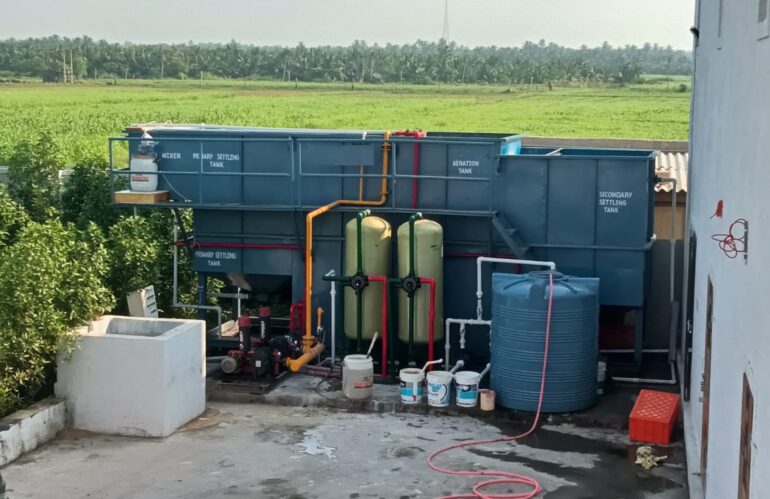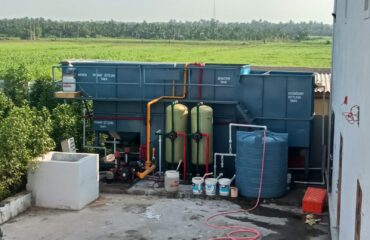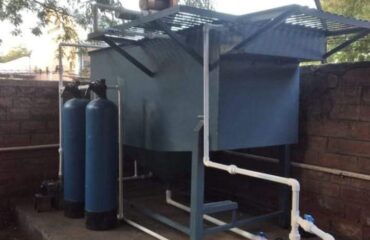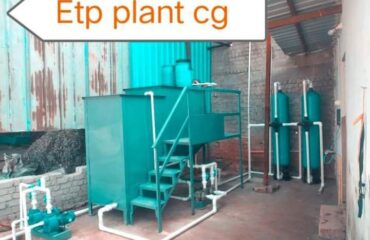In the realm of modern urbanization and industrialization, the imperative for sustainable waste management stands as paramount. One of the pivotal challenges posed by the trajectory of industrial expansion is the generation of wastewater that often contains a medley of pollutants and harmful substances. The Effluent Treatment Plant (ETP) has emerged as a reliable solution to address this consequential environmental concern in cities like Rajkot.
Understanding Effluent Treatment Plants (ETPs)
An Effluent Treatment Plant, conveniently shortened to ETP, is a facility meticulously designed to treat and cleanse industrial wastewater before its eventual release into the ecosystem. The overarching goal of an ETP is the eradication of contaminants and pollutants from the wastewater, ensuring that it aligns with stringent environmental standards and thus poses no harm to delicate ecosystems.
The Role of ETPs in Rajkot
Managing Industrial Wastewater
Rajkot, a bustling city renowned for its industrial activities, grapples with the challenge of managing the substantial volume of wastewater produced by its diverse industries. The Effluent Treatment Plant in Rajkot assumes a pivotal role in processing this wastewater, thereby mitigating its deleterious impact on the environment.
Environmental Protection
By effectively eliminating pollutants from the industrial wastewater, the ETP in Rajkot significantly contributes to the protection of local water bodies, soil integrity, and the overall quality of the air. This role gains heightened significance in urban locales such as Rajkot, where the equilibrium between industrial advancement and environmental conservation necessitates careful attention.
Components of an Effluent Treatment Plant
Pre-Treatment
The process commences with pre-treatment, during which sizeable solid particles and debris are methodically extracted from the wastewater. This initial step serves the dual purpose of preventing damage to subsequent equipment and ensuring the efficacy of subsequent treatment processes.
Primary Treatment
The primary treatment phase employs a sequence of physical processes, including sedimentation and flotation, to efficiently separate suspended solids from the wastewater. This integral stage substantially alleviates the organic load carried by the water.
Secondary Treatment
During the secondary treatment phase, a biological approach is adopted. Microorganisms are harnessed to facilitate the breakdown of organic matter and pollutants present within the wastewater, thereby further refining its composition.
Tertiary Treatment
Tertiary treatment introduces advanced techniques such as chemical coagulation, filtration, and disinfection. These techniques are instrumental in elevating the quality of the treated water to meet exacting standards. Consequently, this treated water often finds utility in non-potable applications.
Advantages of an ETP
Pollution Reduction
The principal advantage intrinsic to an ETP is its ability to curtail pollution. Through the meticulous treatment of industrial wastewater before discharge, these installations proactively thwart the contamination of invaluable natural resources.
Compliance with Regulations
Industries that choose to operate an ETP demonstrate a commitment to adhering to environmental regulations. This commitment not only serves as a safeguard against legal penalties but also bolsters the industry’s reputation as an ethically responsible and sustainable entity.
Future Prospects and Sustainability
Technological Advancements
As technology continues its inexorable advance, the ETPs stand to benefit from innovations that augment the efficiency and efficacy of the treatment process. Incorporating these advancements ensures a more proficient treatment of wastewater.
Public Awareness
Cultivating awareness among industries and the general populace regarding the pivotal role of an ETP is indispensable. An informed populace is more likely to offer support for the implementation and sustained operation of these crucial facilities.
Conclusion
The Effluent Treatment Plant in Rajkot assumes an indispensable role in fostering sustainable industrial growth. Through its adept treatment of wastewater and consequential reduction of pollution, this installation contributes robustly to the city’s environmental vitality. As Rajkot’s developmental trajectory persists, the assimilation of cutting-edge ETP technologies and the dissemination of public awareness will stand as linchpins in the city’s pursuit of a cleaner, greener future.




